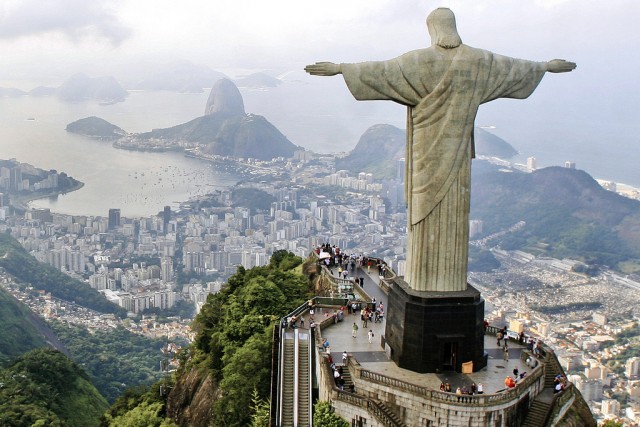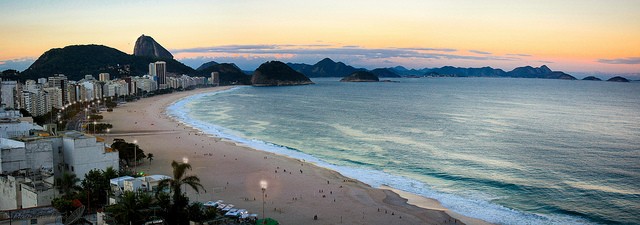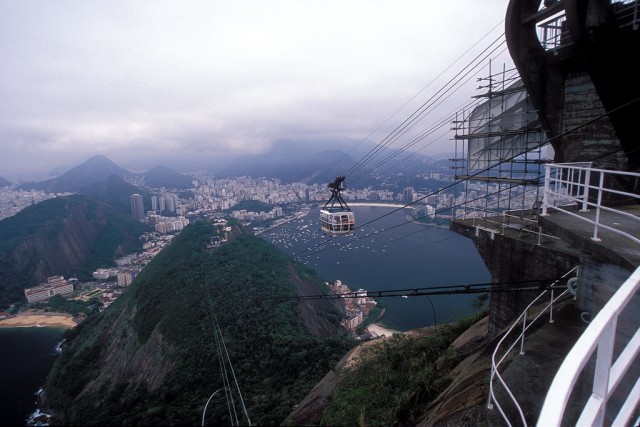 the Travel Enthusiast
the Travel Enthusiast
- 05 Mar
Adam in Amazing Places | NO COMMENTSThe Breathtaking beauty of the City Rio De Janeiro
The mysterious capital of South America owns the style of its locals life
The carnival is like an erupting volcano. It’s filled with life. Dancing, alcohol, beach ,sports, sun, these are the elixirs of life for the 6 million locals of Rio. Large beaches, one of the being the notorious Copacabana, is a leisure center.
Along the soil of the Atlantic, from Copacabana to Ipanema or Leblon heightens the enormous of skyscrapers where lucky middle class locals live and enjoy their time. A bit up, the infamous favelas occupy the hills of the upper hills, where the poorest people live. A line cabin climbs every half an hour from Praia Vermelha, which is between Flamengo and Copacabana, to some of the cities landmarks, one of them being the 400 meter high Pao de Acucar.
The Statue of Christ Watches the whole City
The second landmark is the 40 meter statue, being situated at the Corcovado cliffs at an altitude over 700 me above the city facing the Pao de Acucar. It represents Christ opening his arms. A winding travel, cut through an old tropical forest. The mountain chine where the Corcovado cliffs come out separates the rich and beautiful Barra de Tijuca, from the Northern Tijuca National Park.
Rio de Janeiro can thank its beauty to its exceptional geographical point of the immense Guanabara Bay, at the foothills of a mountain filled with beautiful and rich vegetation.
This scenery obviously intrigued the founder of the place, the Portuguese Andre Goncalvez, when he entered in the Guanabara Bay in 1502. He was deceived, believing to be situated on a river bank, naming the place Rio de Janeiro, meaning ” January River”.
- Flights
- Hotels
- Packages
- Cars
- Cruises
travel search by Travelgrove (get this widget)Because the gulf offered an excellent natural port, Goncalo Coelho erected a Portuguese settlement at Uraca, the hill in fron of Pao de Acurar. The first cul de sac of the future city, Cidade de Sao Sebastio de Rio de Janeiro, were put in 1565 where nowadays is the city center of the capital.
In the early 18th century, gold was discovered at Minas Gerais, the actual neighboring Brazilian federal state. A wave of new European immigrants have arrived in these regions. The city extended rapidly over its walls, later becoming a capital in 1763, replacing the former colonial metropolis, Bahia. The gold disappeared quickly, but after a short period of recession, the country started exporting coffee, and even the Portuguese royal family were refugees here in 1808, escaping from Napoleon. During that time, the city flourished even further.
New buildings were erected, the old buildings were reconstructed, the canalization extended and new streets appeared.
The Metropolitan Cathedral
After the return of King John IV to Portugal and the Brazilian independence of 1822, there was a new era of construction. The end of the 19th was the starting point of new contemporary technologies like railways, illuminated streets, canalization systems, telephones and radios. In the 20th century, most of the colonial constructions left huge boulevards and more tall buildings.
In modern times, the 60’s, some old colonial buildings were demolished and was replaced by the Metropolitan Cathedral, an impressionist and avant gardist structure, beatified in 1976. Even now there are still examples existing, hiding at the Central promenade of Avenida Rio Banca, one of the oldest streets with 100 stores, being visited by many tourists and locals.
In numerous restaurants you barely find a free place to eat, because the food is cheap and most of the time better than the touristic restaurants from the southern zone.
Time feels stopped at Ilha Fiscal. The building, was constructed in Neo Gothic style in 1880 and renovated carefully which costed a lot.
The Botanical Garden from Tijuca National Park, the green oasis which is in the middle of the compact metropolis, is one of the most beautiful complete tropical botanical garden in the world.
You might also like




